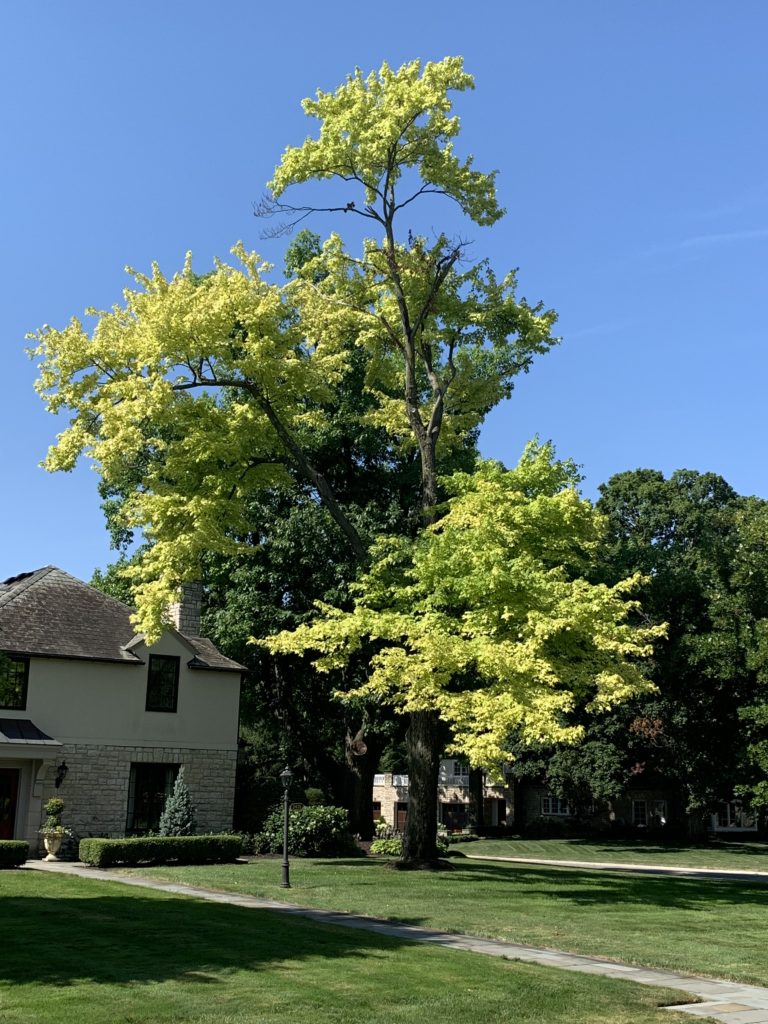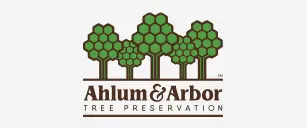
Now that Summer is here, we can admire trees for their healthy and vigorous dark green leaves. Leaves give trees their aesthetic appearance and provide good shade on those hot Summer days. Although these are wonderful attributes, leaves also help us to determine the overall health of the tree. If the leaves on your tree look unusual for the season to you, odds are there is a greater issue lying beneath the surface that is making the tree not function properly. Dark green leaves are a sign that the tree is doing well and getting plenty of energy. Outside of the Fall and Winter months leaves should be maintaining that dark green color. If leaves start to lose that dark green color and turn into a lighter yellowish color, that is typically a symptom of Chlorosis. Like people, trees begin to show outward symptoms when they are sick or diseased. Chlorosis is the result of a vitamin deficiency where the tree is not getting the vital nutrient uptake to provide food for the leaves in the form of Chlorophyll. Chlorophyll makes the leaves on a tree green by giving them food for energy.
This disease is common in certain trees that are not native to Ohio. One, is the River Birch. If you are not familiar with trees native to Ohio, then you probably are not aware that the River Birch is not from this area. As its name suggests, River Birches thrive near water and acidic soil. The reason why they have a hard time surviving here is because the soil in parts of Ohio is mostly alkaline. This leaves the River Birch to struggle and not generate adequate nutrient uptake, thus resulting in Chlorosis. Other trees in Ohio that are susceptible to Chlorosis are Pin Oak, Red Maple, and Sweet Gum trees.
Chlorosis may also be a sign of girdling roots. Girdling roots are roots that constrict the base of the tree. These are usually caused by improper planting practices. Refer to next month’s article on girdling roots to learn more information on this topic. As you can see, Chlorosis can be just the tip of the iceberg when it comes to the health of your tree. To understand the severity, it is important to have a professional visit your property to inspect your tree(s). At Ahlum and Arbor Tree Preservation, our goal is to maintain the health and well-being of the trees in our local area. We send out Certified Arborists with the knowledge and expertise to assess the situation in order to come up with a game plan to give your tree the care that it needs. If you are interested in learning about Chlorosis more in depth in order to understand what the treatment options are, check out our Chlorosis Fact Sheet.



